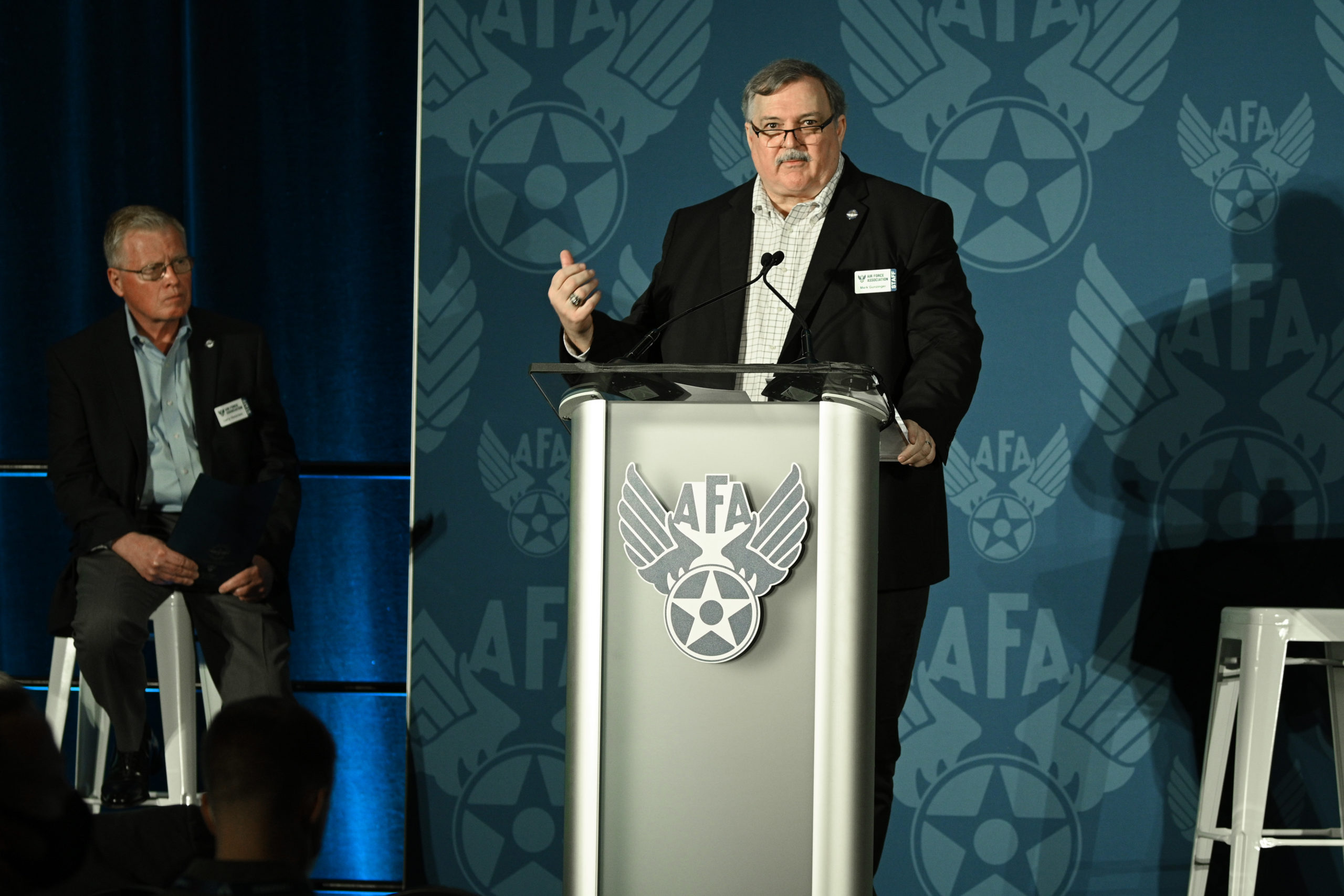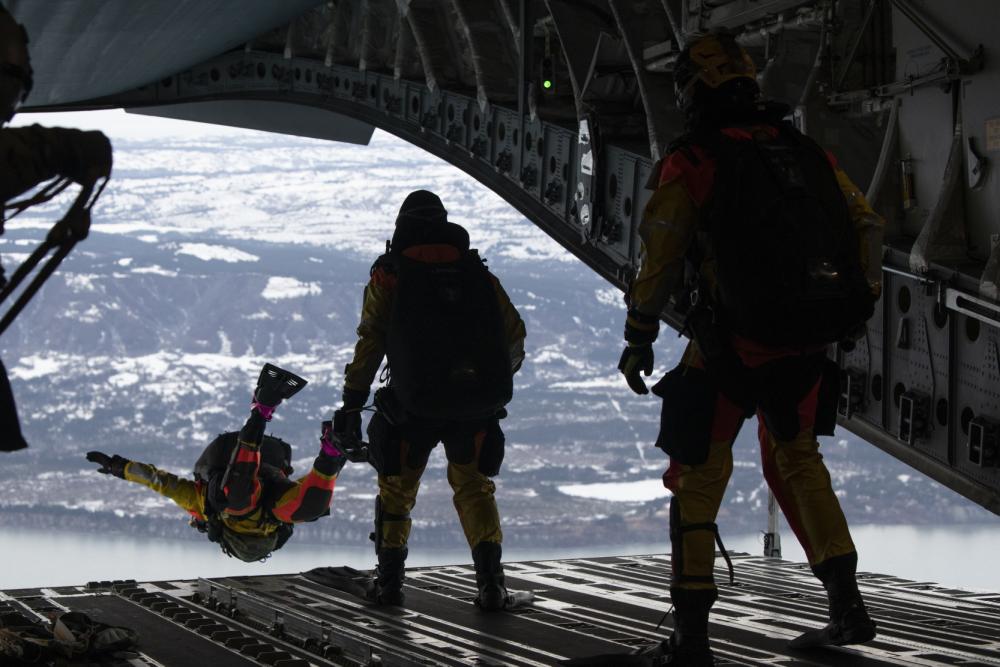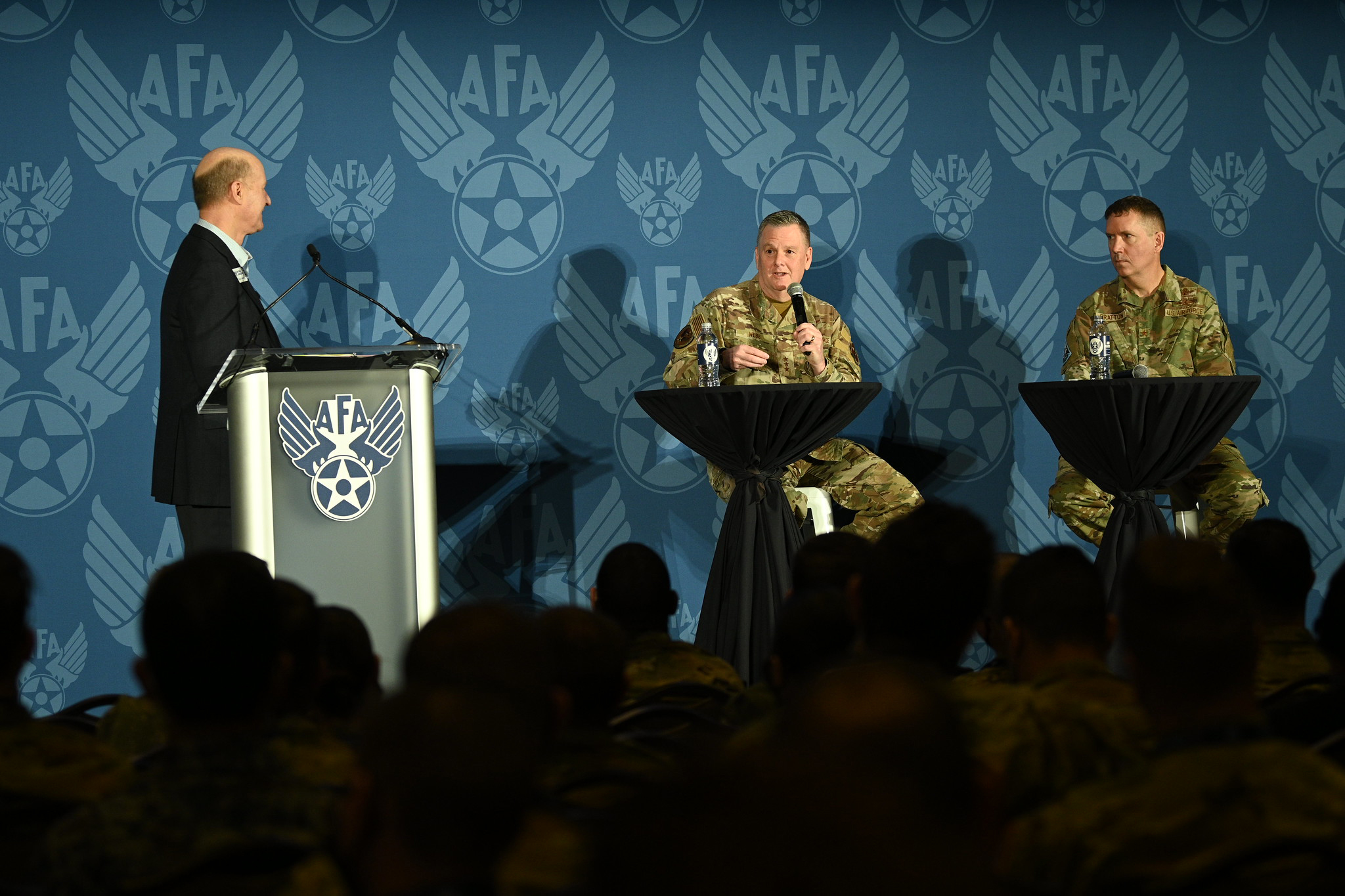The Department of the Air Force is “on the cusp” of releasing a climate action plan that will detail its current and future efforts for renewable, resilient energy, the department’s installations czar told lawmakers March 16. The plan will come as officials grow increasingly anxious about Russia’s impact on the global energy market.
Edwin Oshiba, the acting assistant secretary of the Air Force for energy, installations, and the environment, didn’t specify to the House Armed Services readiness subcommittee exactly when the action plan would be released, but he promised that it would be “aligned with our operational imperatives to enhance resiliency and readiness while balancing mission effectiveness and fiscal efficiency.”
“It will lay out priorities and actionable objectives to address the challenges of a changing climate through improving operational energy efficiency, enhancing installation resilience, diversifying energy sources, and developing a climate literate force,” Oshiba added.
The issue of energy efficiency and resilience in the military has been raised by experts, lawmakers, and Pentagon officials before. But it has taken on new urgency in light of Russia’s invasion of Ukraine and subsequent sanctions from President Joe Biden that have banned the import of Russian oil and other energy sources.
“You don’t need to look any further than today’s headlines to know that energy can be used as a weapon,” noted Meredith Berger, assistant secretary of the Navy for energy, installations, and the environment, in her testimony.
The issue is most pressing in Europe, where Russia has typically exported a vast amount of energy in the form of gas, coal, and other sources. In particular, countries such as Italy and Germany have experienced an energy crisis as of late with their Russian imports drying up—and the Air Force has locations in both nations.
Right now, those bases are dependent on the local energy sources, said Paul Cramer, acting assistant secretary of defense for energy, installations, and environment. But the current crisis is highlighting the need to bolster that approach.
“We are dependent and reliant on the host nation, regardless of whether it’s in Germany, Italy, and [in] the Pacific, for that fuel source, because even if we ran our own, we would still have to use that same source,” Cramer said. “And so the priority within the department is to build resilience to reduce that hazard. So you have multiple sources of power, not relying on one source of power. So we’ve really emphasized over the last few years microgriding so that we can create grids within grids and not rely on that; alternate sources of fuels where we have installed renewables. And to the extent that we can’t work any of those to have some redundant system to continue to operate, we’re going to get [to] the point where we’re going to produce our own electricity.”
The Air Force has been studying energy independence and resilience for installations for some time. The 2020 National Defense Authorization Act required that “major military installations plan for climate change when drafting master plans,” and the department subsequently conducted more than 80 initial assessments by July 2021.
Since then, Oshiba said, the department has published 42 installation energy plans, with 16 more coming in fiscal 2022. Those plans are “focused upon resiliency measures for installations around five key areas: robustness, resourcefulness, redundancy, response, and recovery.”
Elsewhere, the service continues to conduct “pull-the-plug” exercises to ensure it can identify vulnerabilities to infrastructure, particularly for energy and water. The department is also doing “some exciting things” to reduce its operational energy costs, by far its largest account when it comes to fuel costs.
“There’s been some work that’s been going on over the last couple of years in testing drag-reduction technologies primarily for our mobility and refilling assets,” Oshiba said. “Things like micro-veins and winglets that allow us to extend the range of our assets that provides operational reach with fewer assets, and what we call create more, if you will, loiter time to refuel our fighter assets once they’re in those refueling tracks.”









